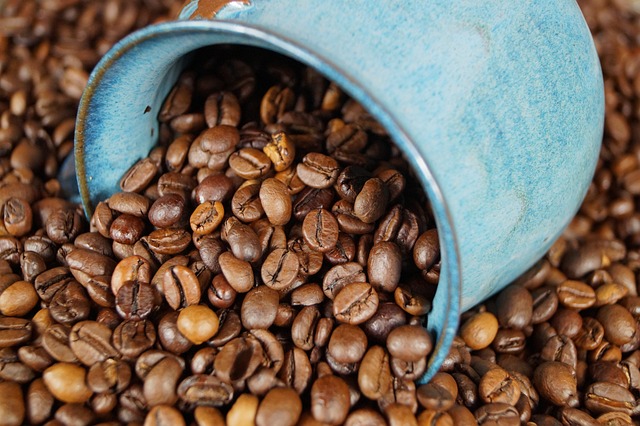The environmental impact of plastic espresso cups has become a growing concern in recent years due to the detrimental effects it has on ecosystems and human health. Plastic cups, commonly used for serving espresso-based beverages, contribute to the ever-increasing plastic waste problem and pose significant risks to the environment. Plastic espresso cups are typically made from polypropylene or polystyrene, both of which are non-biodegradable materials. This means that once these cups are discarded, they persist in the environment for hundreds of years, contributing to the accumulation of plastic waste in landfills, oceans, and other natural habitats. When plastic espresso cups end up in landfills, they undergo a slow process of degradation known as photodegradation. This process occurs when the cups are exposed to sunlight, causing them to break down into smaller microplastics over time.
These microplastics not only contaminate soil and groundwater but also pose a risk to wildlife that may mistake them for food. In marine environments, plastic espresso cups are a significant threat to marine life. The cups can end up in waterways, rivers, and ultimately the ocean, where they pose a severe danger to marine animals. Sea turtles, for instance, often mistake plastic cups for jellyfish and ingest them, leading to digestive issues, internal injuries, and even death. Additionally, marine birds and mammals can become entangled in plastic debris, further exacerbating the impact on their populations. The manufacturing process of plastic espresso cups also contributes to environmental degradation. The extraction of fossil fuels for plastic production releases greenhouse gases, leading to climate change and global warming. Furthermore, the production of plastic cups requires significant amounts of water and energy, further straining natural resources. To mitigate the environmental impact of plastic espresso cups, several alternatives can be considered. One option is to switch to compostable or biodegradable cups made from materials such as cornstarch or sugarcane pulp.
These cups can break down naturally and have a reduced impact on the environment. However, it’s important to note that proper disposal is crucial for these cups to decompose effectively. Another alternative is the use of reusable cups made from materials like glass or stainless steel. By encouraging customers to bring their own cups or offering incentives for using reusable options, coffee shops can significantly reduce their reliance on single-use plastic cups. In conclusion, the environmental impact of plastic espresso cups is a pressing issue that requires immediate attention. The persistence of plastic waste, the risks to ecosystems and wildlife, and the contribution to climate change necessitate a shift towards more sustainable alternatives. By embracing compostable materials and promoting the use of reusable cups, we can minimize the environmental footprint of our daily coffee habits and work towards a cleaner, healthier planet for future generations.
What are the Alternatives to Plastic Espresso Cups?
Plastic espresso cups have long been a convenient choice for coffee enthusiasts, but their detrimental impact on the environment cannot be ignored. As we strive towards a more sustainable future, it is crucial to explore alternative options that minimize our ecological footprint. In this article, we will delve into various alternatives to plastic espresso cups, examining their technical aspects, environmental benefits, and overall suitability for the coffee industry.
- Ceramic Espresso Cups:
Ceramic cups have been a traditional and widely used choice in the coffee industry for their durability and aesthetic appeal. Made from natural materials such as clay, ceramic cups offer excellent heat retention properties, ensuring the espresso remains at an optimal temperature for longer. Additionally, they are reusable and can withstand frequent washing, making them a long-lasting and environmentally friendly alternative. - Glass Espresso Cups:
Glass cups offer a transparent and elegant way to enjoy espresso, providing a visually appealing experience. They are non-reactive and do not impart any unwanted flavors to the coffee, preserving its taste and aroma. Glass is a recyclable material, and when combined with proper recycling practices, it significantly reduces waste in comparison to plastic. However, glass may be more fragile than other options and requires careful handling. - Stainless Steel Espresso Cups:
Stainless steel cups are gaining popularity as a sustainable choice due to their durability and high resistance to corrosion. These cups are lightweight, making them suitable for both indoor and outdoor use. Stainless steel is an inert material, ensuring that it does not affect the taste of the espresso. Furthermore, its long lifespan and recyclability contribute to a reduced environmental impact. - Bamboo Fiber Espresso Cups:
Bamboo fiber cups are emerging as an eco-friendly alternative to plastic. Made from biodegradable and renewable bamboo pulp, these cups are lightweight, sturdy, and have insulating properties. Bamboo is a fast-growing plant, making it a sustainable material choice. However, it’s important to note that some bamboo cups may contain a small amount of melamine resin for durability, so it is crucial to choose products that are certified as food-safe and BPA-free. - Biodegradable and Compostable Espresso Cups:
For those seeking single-use options, biodegradable and compostable espresso cups offer a temporary solution with reduced environmental impact. These cups are typically made from plant-based materials like cornstarch, sugarcane bagasse, or PLA (polylactic acid) derived from renewable resources. While they may still require specific composting conditions to fully break down, they represent a step towards reducing plastic waste.

Are Plastic Espresso Cups Recyclable?
Plastic espresso cups have become a ubiquitous presence in coffee shops and homes around the world. These small containers are designed to hold the perfect shot of espresso, but have you ever wondered about their environmental impact? Specifically, can plastic espresso cups be recycled? In this article, we will delve into the recyclability of plastic espresso cups and shed light on their environmental implications. Plastic espresso cups are typically made from a type of plastic known as polystyrene, which falls under the resin identification code 6 (PS). Polystyrene is a lightweight and durable material commonly used in the food and beverage industry due to its insulating properties. However, the recyclability of polystyrene, including plastic espresso cups, poses significant challenges. The primary issue with recycling plastic espresso cups lies in their composition.
Polystyrene cups are often lined with a thin layer of polyethylene to prevent leakage and enhance insulation. This lining makes the cups more resistant to heat and liquids but also renders them difficult to recycle. The combination of different materials, in this case, plastic and a lining, complicates the recycling process. When it comes to recycling plastic espresso cups, several factors need to be considered. Firstly, the separation of polystyrene from the polyethylene lining is a laborious and time-consuming task. The cups must undergo a rigorous sorting process, and any contamination can render the recycling process ineffective. Secondly, the demand for recycled polystyrene is relatively low compared to other plastics, making it economically unviable for recycling facilities to invest in specialized equipment and processes. Despite these challenges, some recycling facilities and municipalities accept plastic espresso cups for recycling. However, it’s important to note that the availability of recycling facilities capable of handling this specific type of plastic may vary depending on your location. Therefore, it is crucial to check with your local recycling center to determine if they accept plastic espresso cups.
If recycling is not a viable option, the next best course of action is to reduce the consumption of plastic espresso cups altogether. One alternative is to switch to reusable cups made from materials such as ceramic, glass, or stainless steel. These materials are more environmentally friendly and can be used repeatedly, reducing waste generation and the demand for single-use plastic cups. In conclusion, while plastic espresso cups made from polystyrene can technically be recycled, the process is often challenging and limited in availability. The combination of different materials and low demand for recycled polystyrene poses significant obstacles to the effective recycling of plastic espresso cups. To minimize the environmental impact, considering reusable alternatives is highly recommended. By opting for reusable cups, coffee lovers can enjoy their favorite espresso while contributing to a greener and more sustainable future.

How Long Does It Take for Plastic Espresso Cups to Decompose?
Plastic espresso cups, commonly used in cafes and restaurants around the world, have become a prominent environmental concern due to their slow decomposition rate. Understanding the time it takes for these cups to decompose is crucial in assessing their environmental impact and identifying sustainable alternatives. Plastic espresso cups are typically made from a type of plastic called polystyrene, also known as Styrofoam. Polystyrene is a synthetic polymer that is derived from petroleum. Its molecular structure consists of long chains of styrene monomers, which provide the cup with its lightweight and insulating properties. Unfortunately, the durability of polystyrene also means that plastic espresso cups decompose very slowly in natural environments. When exposed to sunlight, air, and moisture, the molecular bonds in polystyrene gradually break down through a process called photodegradation. However, this decomposition process is remarkably slow, and it can take hundreds to thousands of years for a plastic espresso cup to fully decompose.
The primary reason for this extended decomposition time is the chemical stability of polystyrene. The cup’s structure is highly resistant to biological degradation, making it difficult for microorganisms and enzymes to break down the material effectively. As a result, plastic espresso cups persist in the environment for an extended period, contributing to pollution and posing a threat to ecosystems. Moreover, the slow decomposition of plastic espresso cups leads to the accumulation of microplastics in the environment. Over time, weathering and mechanical abrasion cause the plastic to break into smaller and smaller pieces, eventually becoming microplastics—tiny plastic particles measuring less than 5 millimeters in size. These microplastics are often ingested by marine organisms and can enter the food chain, potentially causing detrimental effects on both wildlife and human health. Given the environmental concerns associated with plastic espresso cups, it is crucial to explore sustainable alternatives.
One viable option is the use of compostable or biodegradable cups made from materials such as plant-based plastics or biopolymers. These cups are designed to break down more rapidly under specific conditions, including heat, moisture, and the presence of microorganisms. In composting facilities, for instance, some biodegradable cups can decompose within a matter of weeks or months, significantly reducing their environmental impact compared to traditional plastic cups. In conclusion, plastic espresso cups made from polystyrene have a substantial environmental impact due to their slow decomposition rate. These cups can take hundreds to thousands of years to decompose fully, leading to long-term pollution and the generation of microplastics. To mitigate this environmental harm, it is crucial to consider alternative cup materials that decompose more rapidly and minimize the overall ecological footprint of espresso consumption. By adopting sustainable practices and embracing compostable or biodegradable alternatives, we can contribute to a cleaner and healthier environment for future generations.

What Are the Health Risks Associated with Plastic Espresso Cups?
Plastic espresso cups have become increasingly popular due to their convenience and affordability. However, it is crucial to consider the health risks associated with using these cups. In this article, we will delve into the potential hazards that plastic espresso cups may pose and highlight the importance of understanding these risks. One of the primary concerns regarding plastic espresso cups is the presence of harmful chemicals. Many plastic cups, especially those made from polystyrene or polypropylene, contain chemicals such as bisphenol A (BPA) and phthalates. These chemicals are known as endocrine disruptors, meaning they can interfere with the normal functioning of hormones in the body.
BPA, commonly used in the production of plastic containers, has been linked to various health issues. Research suggests that exposure to BPA can lead to hormonal imbalance, reproductive problems, and an increased risk of certain cancers. Phthalates, on the other hand, are often used to make plastics more flexible. These chemicals have been associated with developmental and reproductive abnormalities, as well as adverse effects on the liver and kidneys. When hot liquids, such as espresso, come into contact with plastic cups, there is a higher chance of chemical leaching. Heat can accelerate the release of BPA and phthalates from the cup into the beverage. Consequently, individuals who frequently consume hot beverages from plastic espresso cups may unknowingly expose themselves to these potentially harmful chemicals. Furthermore, the physical properties of plastic espresso cups can also contribute to health risks. Plastic cups, especially those made from thin and flimsy materials, may release microplastics into the beverage. These microplastics are tiny particles that can be ingested or inhaled, posing potential health hazards. Research suggests that the ingestion of microplastics can lead to inflammation, oxidative stress, and even damage to organs. It is worth noting that the health risks associated with plastic espresso cups are not limited to the direct consumption of beverages.
Improper disposal of these cups can lead to environmental contamination. When plastic cups end up in landfills or oceans, they can break down into smaller fragments, releasing toxic chemicals and further contributing to pollution. To mitigate the health risks associated with plastic espresso cups, several measures can be taken. Firstly, individuals can opt for alternative materials such as ceramic, glass, or stainless steel cups, which do not pose the same chemical hazards as plastic. These materials provide a safer option for enjoying espresso without the potential exposure to harmful substances. Additionally, proper waste management and recycling practices are essential. By disposing of plastic cups correctly and supporting recycling initiatives, we can minimize environmental pollution and reduce the likelihood of plastic cups entering our food and water systems. In conclusion, while plastic espresso cups offer convenience and affordability, it is crucial to be aware of the potential health risks they may pose. The presence of chemicals like BPA and phthalates, along with the release of microplastics, can have detrimental effects on human health. By understanding these risks and making informed choices, individuals can prioritize their well-being and contribute to a healthier and more sustainable future.

How Can Businesses Reduce the Use of Plastic Espresso Cups?
Plastic espresso cups have become a significant environmental concern due to their adverse impact on ecosystems and human health. In response, businesses are increasingly seeking ways to reduce their reliance on these cups and adopt more sustainable alternatives. This article explores various strategies and solutions that businesses can employ to minimize the use of plastic espresso cups, focusing on the environmental implications and sustainable practices within the coffee industry.
- Transitioning to Reusable Espresso Cups:
One effective approach for businesses to reduce the use of plastic espresso cups is to encourage customers to bring their own reusable cups. By offering incentives such as discounts or loyalty rewards, businesses can promote the adoption of reusable cups, thereby decreasing the need for disposable options. - Implementing In-House Ceramic Cups:
Another viable option is to use ceramic cups for serving espresso beverages within the business premises. Ceramic cups are durable, reusable, and have a longer lifespan compared to plastic cups. Additionally, they provide a more authentic coffee experience and can enhance the ambiance of the coffee shop. - Biodegradable and Compostable Alternatives:
Businesses can explore alternative materials that are biodegradable and compostable. For instance, compostable paper cups lined with a plant-based polymer coating can be a suitable substitute for plastic espresso cups. These cups can decompose naturally without releasing harmful chemicals, thereby reducing the environmental impact. - Collaboration with Suppliers:
Businesses should engage in conversations with their suppliers to encourage the use of eco-friendly packaging materials. By emphasizing the importance of sustainable practices, businesses can influence suppliers to provide alternatives to plastic espresso cups, such as bioplastics derived from renewable resources. - Educating and Raising Awareness:
Raising awareness among customers about the environmental consequences of plastic espresso cups is crucial. Businesses can play a pivotal role by displaying informational materials, such as posters and brochures, that highlight the detrimental effects of plastic waste on the environment. Additionally, educating staff about sustainable practices and emphasizing the significance of reducing plastic waste can create a culture of environmental responsibility within the business. - Implementing a Cup Deposit System:
Introducing a cup deposit system can encourage customers to return used cups, promoting reuse and minimizing waste. Businesses can charge a refundable deposit fee for each cup and refund it upon return. This incentivizes customers to participate in the sustainable practice and ensures a continuous supply of reusable cups within the establishment. - Engaging in Recycling Initiatives:
Businesses should actively participate in recycling initiatives and ensure proper segregation of waste. Collaborating with local recycling facilities or implementing on-site recycling programs can facilitate the recycling of plastic espresso cups and reduce their environmental impact.

Are Biodegradable Espresso Cups a Sustainable Solution?
In recent years, the detrimental environmental impact of plastic waste has become a pressing global concern. Single-use plastic items, including espresso cups, contribute significantly to the growing problem of pollution and waste accumulation. As a result, the search for sustainable alternatives has gained momentum, with biodegradable espresso cups emerging as a potential solution. This article aims to explore the viability of biodegradable espresso cups as a sustainable alternative to their plastic counterparts, considering their technical aspects, environmental implications, and potential for widespread adoption. Biodegradable espresso cups are designed to break down and decompose naturally over time, thanks to the inclusion of organic materials. These cups are typically made from biopolymers, such as polylactic acid (PLA), a derivative of corn starch or sugarcane.
The use of biopolymers in cup production reduces the reliance on fossil fuels, making them a more environmentally friendly option. Additionally, some biodegradable cups may incorporate other organic compounds, such as natural fibers or additives, to enhance their strength and insulation properties. One of the key advantages of biodegradable espresso cups is their reduced carbon footprint. During the manufacturing process, the emissions of greenhouse gases associated with the production of biodegradable cups are significantly lower compared to traditional plastic cups. This reduction in carbon emissions can contribute to mitigating climate change, a critical environmental concern. Furthermore, as biodegradable cups degrade, they release carbon dioxide, which can be reabsorbed by plants during photosynthesis, closing the carbon cycle and minimizing long-term environmental impact. Another important aspect to consider is the biodegradability of these cups. Biodegradable espresso cups are designed to break down into organic components through natural processes, such as microbial activity and exposure to moisture. This means that when disposed of in appropriate composting conditions, the cups can be converted into valuable compost, enriching the soil and promoting sustainable agricultural practices. However, it is crucial to note that proper disposal methods are essential for the cups to biodegrade efficiently. Without access to suitable composting facilities, biodegradable cups may not decompose effectively, leading to potential environmental issues. While biodegradable espresso cups offer promising sustainability benefits, their widespread adoption still faces challenges.
One concern is the cost of production. Currently, biodegradable cups tend to be more expensive to manufacture than traditional plastic cups. This cost disparity is mainly due to the higher expenses associated with sourcing, processing, and refining organic materials. However, as technology advances and economies of scale come into play, it is expected that the cost of biodegradable cups will decrease, making them a more economically viable option. Furthermore, consumer awareness and willingness to embrace sustainable alternatives play a vital role in the success of biodegradable espresso cups. Educating consumers about the environmental impact of plastic cups and the benefits of biodegradable alternatives can foster a shift in consumer behavior. Encouraging individuals to choose biodegradable cups and supporting establishments that offer them can create a demand-driven market, incentivizing manufacturers to produce these cups on a larger scale and at a more competitive price point. In conclusion, biodegradable espresso cups hold great potential as a sustainable solution to mitigate the environmental impact of plastic cups. With their reduced carbon footprint, ability to biodegrade into organic components, and potential for composting, these cups offer a more environmentally friendly alternative. Although challenges such as production costs and consumer adoption remain, continued research, technological advancements, and awareness campaigns can pave the way for a future where biodegradable espresso cups become the norm, supporting a cleaner and more sustainable planet for future generations.

